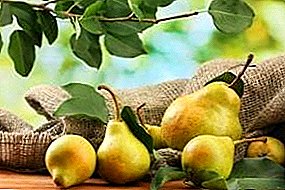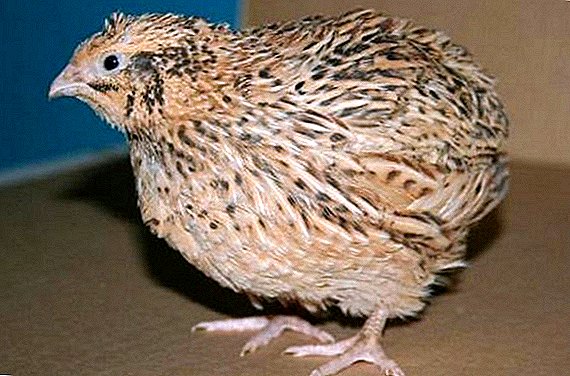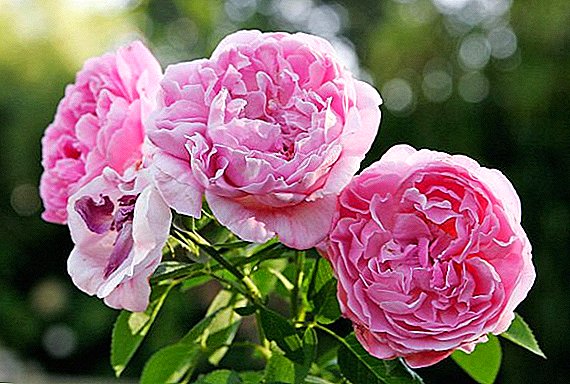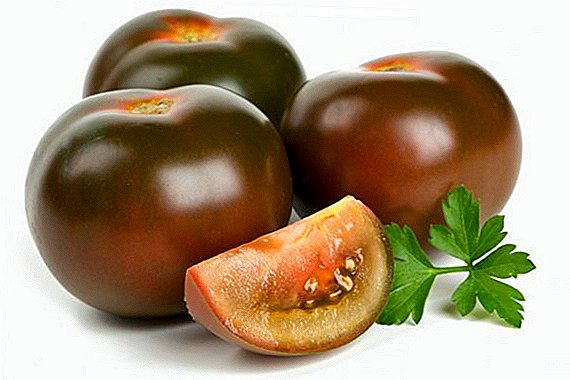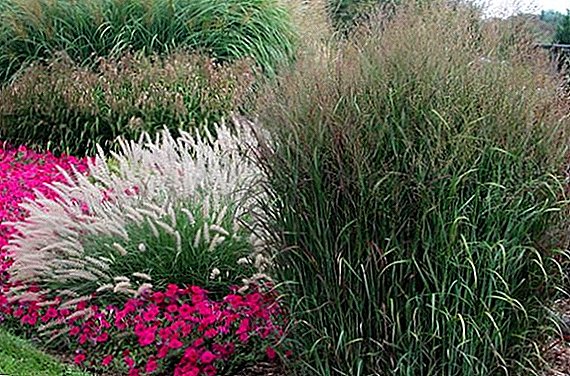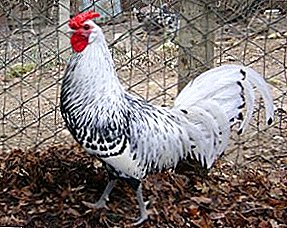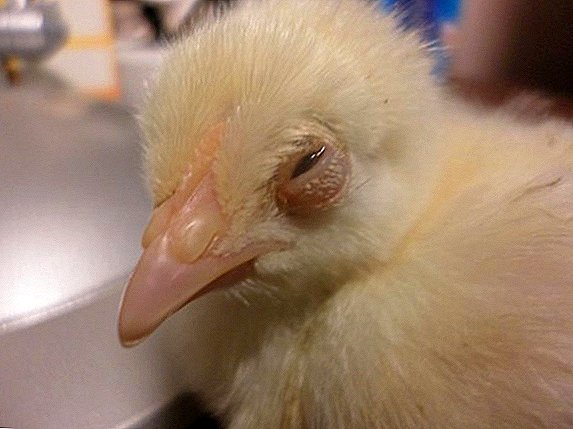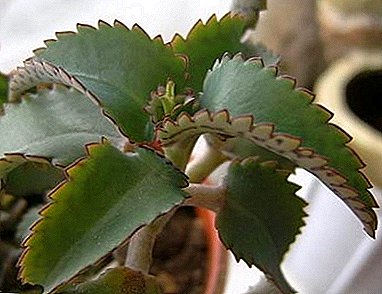
Popular with fans of indoor flowers Kalanchoe - pretty unpretentious plant.
However, problems in its cultivation still exist.
Almost all Diseases of Kalanchoe Leaves appear due to violation of conditions. It is worth noting that this plant likes diffused lighting and moderate watering.
The article below discusses pests, diseases (leaf diseases), and the treatment of Kalanchoe from a photo.
By providing him with the necessary care, you will achieve both proper development and flowering.
But if it began to hurt, its leaves were covered with spots, or you found small insects on it - it is necessary to take urgent measures.
Leaf disease
Yellowing leaves
Why Kalanchoe Yellows and what to do with it? This usually happens after flowering. The stem is pulled out and exposed to the bottom.
This is a sign of exhaustion. Need new soil and intensive feeding.
Replant the plant in a new substrate. After transplantation, feed it with Zircon solution.
Why do kalanchoe often leaves turn yellow and dry? This is primarily due to the lack of boron and to feed the flower need fertilizer with a high content of this substance.
Leaf curl
Why do leaves spin on Kalanchoe? In Kalanchoe, leaves are most likely curled due to damage to the root system.
The reason for this - extra water. Remove the plant from the pot and inspect the roots.
 Damage is necessary to cut, wash the healthy part in a weak solution of potassium permanganate.
Damage is necessary to cut, wash the healthy part in a weak solution of potassium permanganate.
Then process the cuts with charcoal powder and plant the surviving part in fresh soil.
Why are leaves of Kalanchoe curling?
If a leaves curl and at the same time they change color to burgundy, which means that the plant is located on an overly lighted place; for a long time direct rays fall on it.
In this case, shade the flower and spray it during the day.
Leaves fall
Why does Kalanchoe shed its leaves? Have Kalanchoe fall off leaves due wrong content in winter. This happens when the flower is kept in a stuffy room, next to the radiators.
If you notice this, move it to a colder room. It is desirable that the temperature in it was not higher than 15 degrees. In this case, the winter will pass without loss.
So why leaves fall have kalanchoe and what to do? Another reason for this may be the coolness, which cannot be combined with moisture - on the leaves mold or black spots. This is a fungus. Fungicides will help to destroy it.
Why does the Kalanchoe fade?
What to do, if Kalanchoe wilts? Why does the plant have soft leaves? The reason depends on the age of the plant.
 If it is young, then such signs speak of a lack of water. But this is not necessarily related to quantity.
If it is young, then such signs speak of a lack of water. But this is not necessarily related to quantity.
If the root is rotten, then moisture does not enter the leaves, but accumulates in the soil.
This may be the case with irregular watering.
If the earth dries out too much, and then it is plentifully watered, then the plant can also curl.
Watering should be carried out when drying, and not when drying.
In an adult Kalanchoe, leaves fade due to aging. Rejuvenate it. Separate the cuttings and plant again.
Black spots on the leaves
If the leaves of Kalanchoe blacken, this indicates the presence of fungus. This is due to an overabundance of moisture, the soil does not dry out and its aeration is disturbed.
Change the soil, increase its looseness by adding sand. Adjust the watering in the future and then the leaves will not turn black in Kalanchoe.
Brown spots on leaves
Dry brown crusts on the leaves is Kalanchoe diseasecalled dropsy. It arises from temperature fluctuations combined with waterlogging.
Move Kalanchoe to a warmer and drier place, reduce the amount of water in the watering. Make sure that cold air does not get on it, for example, when airing.
White bloom on the leaves
Kalanchoe covered white bloom due to the fact that the water for irrigation too hard. It contains salt and lime impurities.
It needs to be mitigated: defend, filter. Chroshie means - freezing and subsequent thawing.
To soften Once a month you can add citric acid to it at the tip of a knife for one liter. You can add three per cent vinegar - per liter 1 teaspoon. The liquid with acid is defended for two days, so that all salts are settled, then they are drained and used for irrigation.
Leaves dropped
Mostly Kalanchoe leaves down because of the plant is cold. Often this happens when the overflow in a cold room. Transfer Kalanchoe to a warm, dry room.
If it does not recover, change the soil. Plant at the same time plant in almost dry soil and pour only after 1-2 days, when excess moisture will leave.
Kalanchoe grows up and does not bloom
 A feature of Kalanchoe is abundant flowering in the first year of life. So why then the flower grows up and does not bloom? After the initial flowering, it falls into a resting phase.
A feature of Kalanchoe is abundant flowering in the first year of life. So why then the flower grows up and does not bloom? After the initial flowering, it falls into a resting phase.
Starts pull up and don't bloom, accumulate leaves. To get him to pick up new buds, you need to make the formation of a bush.
Cut off the crown and root them. You will receive new plants, and old specimens will begin to accumulate strength for budding.
What to do, if Kalanchoe stretched out? In such shoots, remove a pair of top leaves. After that new shoots will grow on them.
Do this until your flower becomes a lush, round-shaped bush.
To stimulate flowering, they also reduce daylight hours to 12 hours. Clean in a dark place Kalanchoe at 7 pm, and at 7 am again, put on the light.
Why does Kalanchoe have small leaves?
Leaves shrink and become dull due to lack of light.Kalanchoe needs a bright light as long as possible during the day.
We do not recommend to keep it away from the window or on the north windows. Also, the size is affected by the adequacy of nutrients, so the plant must be regularly fed.
This is especially necessary during the period of budding and flowering, as he needs a lot of strength at this time. Feed once every 14 days.
Nibbled leaves
Why does Kalanchoe have gnawed leaves? Sometimes holes appear on the leaves, as if someone had gnawed off the pieces. These are burns caused by spraying under the direct rays of the sun.
Drops act as lenses and the sun burns through the delicate skin. These areas and turn into small holes.
A photo
Leaf Diseases and Kalanchoe Pests:





Pests
Diseases of the blossoming Kalanchoe leaves and treatment
Phytophthora rot
Spots of brown color speak about its infection. The reason - excessive watering, poor ventilation.
In addition, it may happen because of the difference in temperature of the soil and the air is more than 8 degrees.
To avoid this disease, you need to plant Kalanchoe in a loose substrate, for good ventilation of the roots.
If the disease has developed, stop watering.
You can replace part of the soil with a new one. It is also necessary to carry out the treatment with fungicides ("Profit Gold", "Ridomil")
Gray rot
When it appears on the leaves and stem, oozing spots appear, covered with gray bloom. Like other diseases, gray rot develops with an excess of moisture in the soil and air, poor ventilation, lack of light.
Will help get rid of this treatment systemic fungicides ("Fundazol", "Rovral")
Mealy dew
 The disease manifests itself in the form of white with powdery spots like mold on the leaves.
The disease manifests itself in the form of white with powdery spots like mold on the leaves.
As a result, the leaves die off.
The reason for the development of this disease is low humidity and high air temperature.
Under such conditions, leaf elasticity suffers and they become vulnerable to fungus.
To avoid this, you need to follow the rules of watering. Spraying will help "Topaz", "Fundazol."
Pest kalanchoe
Aphid
One of the most dangerous enemies. These are small greenish-black sucking insects that cover the leaves first from the bottom. Gradually, the entire plant is covered by the pest. The leaves begin to lighten, become sticky.
This happens because the aphid releases a poisonous substance. The breath of the leaves is broken, the plant may die. Aphids are taken in flower buds, they do not bloom and fall off.
Infection with aphids is also dangerous because it carries hundreds of viruses. And its release - a nutrient medium for the fungus.
Leaves affected by aphids are cut and harness. More healthy parts are treated with insecticide. A good aid is the soap. It is washed with a solution of the surface before treatment with poison.
But to destroy the aphids at a time will not succeed. The treatment is carried out 4 times with an interval of a week.
Shchitovka
 Why turn yellow and the lower leaves of Kalanchoe flowering fall? This insect is about 2 millimeters in size, its body is covered with brown shell - shield.
Why turn yellow and the lower leaves of Kalanchoe flowering fall? This insect is about 2 millimeters in size, its body is covered with brown shell - shield.
This coating protects the shield from poisons, so it is difficult to fight it.
Why u Kalanchoe dry and fall leaves? This occurs because the shield dwells on the underside of the leaves. Thus contribute to the violation of their diet.
Appears from insect colonies. Plus, in the secretions of the thyroid gland gets black fungus. This worsens the condition of the plant.
Prevent infection shield can airing the premises and sprayingm (shieldovka does not like moisture). If the pest does appear, collect it, wash all surfaces with a solution of soap.
Before that, wipe them with vodka or alcohol, so the guard can be washed off more easily. Special poisons from this pest are not made, so use any.
What to do if Kalanchoe still dies? There are folk remedies against this pest. This is an infusion of garlic - 6 cloves per glass of water, infused for 3-4 hours and filtered.
Redhead
Mealybug - sucking white insect. You can notice it with the naked eye.
To the question why the leaves of the Kalanchoe dry, you can answer that the plant is affected by the b heart. It covers the leaves with wax bloom, the entire above-ground part, multiplies with great speed. A black fungus settles on the excretions of the insects. Kalanchoe, damaged by the scarlet dries and does not develop.
Noticing the appearance of the pest, immediately take action.
Wash the worms with a cotton swab with soapy water. Then, three times with an interval of 10 days, spray the plant with an infusion of tobacco, garlic, or treat with calendula alcohol tincture.
If Kalanchoe leaves dry, it means the plant is severely affected with worms, spend 3 treatments with the same interval with the drugs "Aktara", Tanrek ", Fitoverm", "Mospilan"
How to revive Kalanchoe?
If your pet is badly damaged and in this form does not please the eye, you need to restore it. There are several ways:
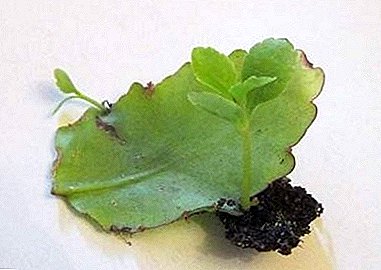 Rooting tops of shoots.
Rooting tops of shoots.
The top of the shoot is cut with a sharp knife, cut with a solution of the “Kornevin” preparation and placed in a wet, crushed sphagnum or sand.- Topping. Adult Kalanchoe often ceases to bloom and becomes nondescript. In this case, you need to remove the shoots, which were flowers.
After the young shoots begin to grow, pin 2 leaves on them. Removal of the tops also helps to stimulate the formation of young shoots.
- If the shoots below are bare, and from above they look normal, cut off the non-bare top and root it. You can put the crown in the water, and you can immediately plant in fresh soil and water it abundantly.
The plant will first look sluggish, but when the roots are formed on it, it will restore elasticity and begin to develop. As soon as this happens, reduce watering.
The main conditions for the cultivation of Kalanchoe are compliance with the recommended humidity and light.
Choose the optimal place for its existence, follow the recommendations for care, do not allow damage by insects, and it will thank you for a long and very decorative flowering.


 Rooting tops of shoots.
Rooting tops of shoots.